 Your new post is loading...
 Your new post is loading...
For traditional media companies looking for an alternative, Blendle may have an answer. The website essentially acts as “Spotify for journalism.“ It’s a reinvention of the newsstand, built for the Internet, where readers pay by the article instead of per issue or through a monthly subscription.
This all occurs seamlessly in a way that prioritizes the user: your credit card information is stored on the site for easy payment, and an unorthodox refund option allows users to get their money back if they’re not satisfied with the piece.
Traditional publishers seem to be excited by Blendle’s potential to provide a desperately needed new revenue stream. The New York Times (a Blendle investor), the Wall Street Journal and the Washington Post have already signed up, and more American publishers are likely on the way...
But do content-driven brands skew closer to publications or are their marketing roots still showing? We analyzed 200 posts that ranked on page one of Google for terms related to the marketing industry that generate at least 500 monthly searches.
Of course, publishers, whether marketers or journalists, have direct control over only a handful of Google’s evolving ranking criteria, and the factors that impact search results shift by topic and keyword. For example, influencing page and domain authority is like steering an ocean liner: It’s doable, provided you’re not in a hurry. Thus, for the purposes of our analysis, we paid particular attention to the recency, content structure, and post quality -- factors largely within the publisher’s span of control (though because the weighting of each is constantly adjusted by machine-learning, we kept our analysis broad stroke and directional)....
The communal and rapid-fire nature of many social media platforms creates the potential for errors and falsehoods – an emerging practice in conflict-related propaganda – to go viral.
“The next big thing is not attention; the next big thing is trust,” Eric Scherer, the director of future media at France Television, told the International Journalism Festival in Perugia in May. If trust is the most important factor in developing relationships between audiences and news producers, verifying material that comes from social media takes on even greater importance as a way to ensure the credibility and reliability of journalists and their content.
Newspapers, in particular, have built up trusted brands and relationships with their communities over decades, if not over hundreds of years. Part of that trust flows from people knowing that what they see and read is credible information that has gone through a verification process....
With content on-demand and ever-available, traditional loyalty is going theway of the homepage. Continuing to optimize for increased pageviews no longer makes business sense.
In this age of transformation, the ability to create new and differentiated methods of sustained growth has become more important than ever. Only the innovative and agile prevail.
Below is a framework, followed by observations on some of the most innovative media organizations. Each example demonstrates an insight on how to shift from using traditional marketing practices alone, to a holistic approach for growing and retaining users....
You could argue that it doesn’t matter. That these journalists are well established and don’t need online audiences. Perhaps. But I think they’re missing out on the medium that allows you to broaden your scope of thinking, test ideas in an online marketplace and allow fans to have a small sliver of unfiltered access to you. It’s a two-way world. Too many NY Times oldline journos are one-way. Shame. And when you look at the 43 people Brooks follows it’s probably about 35 of his fellow NY Times colleagues. And Marc Andreessen. At least there’s that. Marc, maybe you can break through?...
Virtual reality is ascendant, and it’s time for media outlets to take notice. Why? Consumer access to VR devices is about to take off thanks to ambitious prototypes from Oculus Rift and, in the past year, several major projects have redefined immersion journalism.In September,
The Des Moines Register released Harvest of Change, a detailed tour of one family farm in Iowa. In January, Nonny de la Peña and the USC School of Cinematic Arts debuted Project Syria at the World Economic Forum. Project Syria is a full-body experience that places viewers at the scene of a bombing, then allows them to explore a refugee camp. And October’s round of Knight Prototype Fund grants included support for a blockbuster collaboration collaboration between The Tow Center for Digital Journalism at Columbia University’s Graduate School of Journalism, Frontline, and Secret Location, an interactive digital agency.
These organizations are working together to produce a documentary work focused on the Ebola crisis and will share best practices and strategies for producing virtual reality-augmented journalism once they’ve finished.These new forms of journalism are ambitious documentary enterprises, comprising many team members, cross-organizational partnerships, and potentially shocking prices to those familiar with prose journalism budgets. (Harvest of Change was produced for under $50,000.)
But this work is also providing valuable, vital public services with remarkable emotional punch. Full-body journalism is a remarkable tool for encouraging empathy through what de la Peña calls “presence....
The growth of social media has changed the way news organisations cover conflicts around the world, but traditional journalistic values are still vital.
These, at least, were the main conclusions from a panel at the Web Summit conference in Dublin this morning, featuring representatives from Time, Vice News and News Corporation-owned social curation service Storyful.
“I’m not sure that the task of journalism has changed that much: we still send journalists to unearth stories and break news. But Twitter is our competition, and we have faced up to that reality,” said Matt McAllester, Europe editor for Time....
Journalism + Design, the latest program at the The New School in New York City is teaching journalists how to think like designers, and designers how to think like journalists. With a curriculum co-developed by Ideo, the undergraduate program kicked off this semester teaching students how to harness design and design thinking in news.
This interdisciplinary collaboration between Parsons, the New School’s design college, and the liberal-arts-focused Eugene Lang College, will be the first-ever undergrad journalism program at the New School. “The idea was to combine the rigorous critical thinking of a great liberal arts college with the creative design thinking of a great design school,” Program Director Heather Chaplin tells Co.Design. The experimental new program was funded in part by a $250,000 grant from the Knight Foundation, which funds innovation in journalism.
The program--which the creators refer to as being in beta--launched with six classes on topics like “Visualizing Data,” though for the time being, students can also take applicable classes, like web design, at Parsons or at Eugene Lang. In addition to regular faculty, guest editors and designers participate in classes, and each semester more informal “pop-up classes” will taught by working journalists like John Keefe, a data news editor at WNYC who’s teaching a class--in the style of a cooking show--on how to make maps....
This week we used Insights data to see how some different business sites are performing on Facebook, LinkedIn and Twitter during the month of September to yesterday (September 1 to 24).
Business news is hotly discussed in the social space. Some of the most talked about digital news sites of recent times (Business Insider, Quartz) cover business daily, while stalwarts like the Wall Street Journal and Forbes have also made themselves very visible in the new social landscape.
We picked seven prominent sites and ran some queries in our Insights dashboard: The Financial Times The Wall Street Journal Quartz Business Insider Harvard Business Review Forbes Bloomberg.com
We used the data to analyze the biggest stories by network, the most ‘social’ writers at different sites, and overall site performance. Insights also allowed us to graph their average share counts per story....
...I misjudged -- I didn't think nearly radically enough. The quick-hit stream of Twitter or the Facebook News Feed is giving way to a largely agnostic, mostly opt-in "notification layer" on top of the phone screen.
And yet even that notification layer feels larded in the context of the single-most-interesting media-industry detail from yesterday's Apple presentation:
We are about to enter the era of "glance journalism."
"Glance" is the name of the feature of the Apple Watch that let Watch-wearers skim through a series of not-quite-notifications. Maybe they are notifications, but only as a subset of a new class of ultra-brief news.
"Atomic unit" was a helpful metaphor, but we're now talking about the "proton/neutron" level.
"Glance journalism" makes tweets look like longform, typical news notifications (and even innovative atomized news apps) look like endless scroll and Seward's list of essential Things (chart, gif, quote, stat) look unresponsive.
What a wonderfully evocative word: "glance." Apple's capital-G appropriation of it -- and the primordial display on the keynote screen -- is what set my mind spinning yesterday afternoon.
A few months ago, noted investor Marc Andreessen proclaimed his bullish-ness about the state of the news industry, predicting it would grow 100 times. It was a nervy claim to make, in a time when snackable content is all the rage and virality is the most coveted status in media.
So no one was surprised when he personally funded some of that growth; his venture firm Andreessen Horowitz was the sole investor in BuzzFeed’s stunning $50 million round announced last month. The news got the media and tech worlds buzzing (sorry) once again about what constitutes journalism in the digital age and how to best serve audiences growing consistently hungrier for content.As a sixth-generation journalist and one who has studied, written, and worked in many forms of journalism, I was particularly fond of Andreessen’s prediction — and that he followed it up by putting his money where his mouth is.
I’d argue though that the smartest bets in media are going to be companies that fulfill the best values of traditional journalism through the means and necessities of the new digital landscape. The biggest winners will be those who combine old-school news-gathering methods with the distribution technology that makes sites like BuzzFeed such powerhouses....
The majority of the shit described in this blog post is useless.
The world doesn’t need 5,000 separate-but-barely-distinct versions of every damn story from every damn field of human endeavor. The people getting paid (barely) to produce those slightly differentiated versions of every story ever are wasting their time, unless “able to crop a picture of a celebrity in WordPress without help” becomes, suddenly, a much scarcer and more in-demand skill.
The reader, in nearly every case, is getting a less-good version (or several less-good versions) of the story than whatever the original was. The vast majority of this sort of aggregation could be replaced with one curated Twitter feed that every website in existence could run on a siderail, and the media consumer would benefit. And even in that scenario, the bottom-rung producers of content are still effectively screwed. So I don’t know. Maybe it’s time to consider an organized aggregator work slowdown?
The definition of "all the news that's fit to print" has changed on the Internet.
It’s not only Jon Stewart. Over time, it’s become abundantly clear to many that Fox News doesn’t always do the best with living up to the slogan “Fair and Balanced.”
But occasionally, Fox steps over the line from being blatantly partisan to just plain wrong. Such was the case recently, when they picked up a story from the Washington Free Beacon on an Indiana University program calledTruthy, and spread it all around their website and network.
According to Fox, Truthy was designed so the government can monitor hate speech and other suspicious patterns onsocial media. As the network’s Megyn Kelly put it, Truthy amounts to “some bureaucrat deciding whether you are being hateful or misinforming people.
”Except that in this case, it was Kelly who was doing the misinforming. Truthy has actually been around for three years, so it isn’t some new weapon the government is trying to implement without our knowledge. Moreover, the project’s goal is not surveillance, but examination....
|
In two recent posts, I asked what Google could do for news — and vice versa. Now I’ll pose the question about Facebook.
The core of the problem and the opportunity is similar for both: Google and Facebook know more about publishers’ readers than they do. Both services also know more about publishers’ content than they do. So now I’ll ask: Is there a way to share some of that information — or to use the scare word, data — to the benefit of all three parties involved: first the user, then the services and the news organizations?
Google is under pressure especially in Europe, starting with German publishers, then the French, and lately the Spanish, each using their political clout to box the giant in — and it’s working. Google is now in a mood to make friends with the news business and that’s why I wrote those posts, to suggest what I thought could lead to the beginning of a meaningful friendship....
News organizations are experimenting increasingly with robot journalism, using computer programs to transform data into news stories, or news stories into multimedia presentations.
Most uses of robot journalism have been for fairly formulaic situations — company earnings reports, stock market summaries, earthquake alerts and youth sports stories. But inevitably, news companies will be testing automatic news writing on more challenging subjects.
What are the ethics of robot journalism? When editors consider using automated news writing, what issues of accuracy, quality and transparency arise?
News organizations are meant to play a critical role in the dissemination of quality, accurate information in society. This has become more challenging with the onslaught of hoaxes, misinformation, and other forms of inaccurate content that flow constantly over digital platforms.
Journalists today have an imperative — and an opportunity — to sift through the mass of content being created and shared in order to separate true from false, and to help the truth to spread.
Unfortunately, as this paper details, that isn’t the current reality of how news organizations cover unverified claims, online rumors, and viral content. Lies spread much farther than the truth, and news organizations play a powerful role in making this happen....
Amid widening concerns that another startup bubble has formed, digital media remains a white-hot market among the private-investment community.
Last year, venture capital poured at least $683 million into digital media companies worldwide -- more than twice the $277 million invested in 2013, according to Preqin, which tracks venture-capital investments.
That investment comes as traditional media companies like The New York Times and Condé Nast cut staff, trim costs and turn over every possible rock in search of new revenue streams. Meanwhile, digital media companies -- which have a fraction of old media's revenue and even less of their profits -- are awash in investor cash....
... I always wanted to believe that the two cultures could be compatible—in fact, I hoped the old world would be able to morph swiftly and efficiently enough to catch the wave and deal with new kinds of readers—with a wider set of technologies and shape-changing competition. I still want to believe this.
In the following chart, I list the most critical issues facing media today, and pinpoint the areas of transformation that are both the most urgent and the easiest to address. My allocation of purple dots (feasibility) illustrates the height of hurdles facing large, established media brands....
Following on from yesterday’s look at the biggest sites on Facebook during October, here are the publishers that best managed to use Twitter to spread their stories and reach new readers in October.
In September’s Twitter rankings, we asked if October would be the month that the BBC would see more than 4 millions tweets for the first time. The answer, according to data from Spike:Yep, the BBC break the 4 million tweet mark for the first time, Mashable record an impressive 842 average tweets per story throughout October, CNN and the Guardian overtake ABC News to take third and fourth place,
All top ten sites achieve over 1 million tweets, Russia Today enter the charts at 25th....
Throughout the twentieth century the core proposition of foreign correspondence was to bear witness—to go places where the audience couldn’t and report back on what occurred.
Three interrelated trends now challenge this tradition. First, citizens living through events can tell the world about them directly via a range of digital technologies. Second, journalists themselves have the ability to report on some events, particularly breaking news, without physically being there. Finally, the financial pressures that digital technology have brought to legacy news media have forced many to close their international bureaus.
In this age of post-legacy media, local reporters, activists, ordinary citizens—and traditional foreign correspondents—are all now using digital technologies to inform the world of breaking news, and to offer analysis and opinions on global trends. These important changes are documented in the Tow Center’s report The New Global Journalism: Foreign Correspondence in Transition....
I looked at my first tablet magazine in 2010. With a few exceptions, the ones I look at today aren’t all that different now than they were then. For the most part, they are magazines that look and navigate like print editions with some “enhanced” elements – an interactive graphic here, a video there. Phones get bigger and digital audiences keep growing, but magazine publishers can’t seem to create a digital product that people want to pay for.
Four years in Internet time is forever. Facebook, Twitter and YouTube all launched within less than a four-year period, and none of those sites looked or worked the same for very long. Yet tablet magazine innovation sputters. I spoke to some industry experts to determine where magazine publishers got stuck. (I tried to talk to publishers too, but they were not as responsive to my queries about why their digital editions sold so poorly.) Here’s what I found....
Student editor's response: "I’m so scared and excited I could pee my pants."
Medium now has Substance. The popular publishing platform recently started hosting Substance, a new student publication at Mt. San Antonio College that doubles as a totally reinvented version of The Mountaineer campus newspaper.
It is the first college media outlet to operate primarily on Medium. Substance adviser and MSAC j-prof extraordinaire Toni Albertson describes the arrangement as nothing less than “the perfect merge of tech and college journalism.”
In a bravura announcement yesterday about the merger, Albertson explained that the impetus behind it was two-fold — mounting staff frustration at the print production routine and growing reader ennui toward the print edition....
The most interesting news consumption research uses ethnography: this involves watching people and measuring what they actually do – not what they say they do. To this end AP’s 2008 report A New Model for News is still one of the most insightful pieces of research into news consumption you’ll ever read – because it picks out details like the role that email and desktop widgets play, or the reasons why people check the news in the first place (they’re bored at work, for example).
Now six years on two Dutch researchers have published a paper summarising various pieces of ethnographic and interview-based consumption research (£) over the last decade – providing some genuine insights into just how varied news ‘consumption’ actually is....
...BuzzFeed is to journalism what Geraldo is to Walter Cronkite. It sucks.
It is built on meanest of readers’ instincts. These endless stream of crass listicles are an insult to the human intelligence and goodness you personify. Even Business Insider, a champion practitioner of cheap click-bait schemes, looks like The New York Review of Books compared to BuzzFeed. And don’t tell me that, by hiring a couple of “seasoned editors and writers” as the PR spin puts it, BuzzFeed will become a noble and notable contributor of information. We never saw a down/mass market product morphing into a premium media. You can delete as many posts as you wish, it won’t alter BF’s peculiar DNA.
Fact is, quality content does exist in BuzzFeed (an example here), but in the same way as a trash can contains leftovers of good food: you must go deep to find it. It won’t change the fact that what people enjoy the most on BuzzFeed is unparalleled ability to package, organize and disseminate mediocrity broken down in this promising nomenclature:...
Call it the newspaper network wars.
The Washington Post’s Newspaper Partner Program has grown from a March-planted seedling into a full-grown fall oak. The initiative now includes more than 120 daily newspapers in the U.S., and could connect with more than 200,000 digital newspaper subscribers or more by the middle of next year. Meanwhile, The New York Times is newly working with newspaper partners, launching its own products. USA Today, too, is now pitching a news partner program across the country.
What’s going on here? Why in 2014 are we seeing both new digital and print partner programs being offered up by three of America’s national newspaper brands? We can chalk it up to two things. Most prominently, the Jeff Bezos era at the Washington Post is fully taking hold. Secondly, publishers —these national ones and the early-adopting regional ones — are getting smarter at working around the edges, figuring out how to add on the smaller things that readers will pay for in this renewed age of reader revenue....
|
 Your new post is loading...
Your new post is loading...
 Your new post is loading...
Your new post is loading...









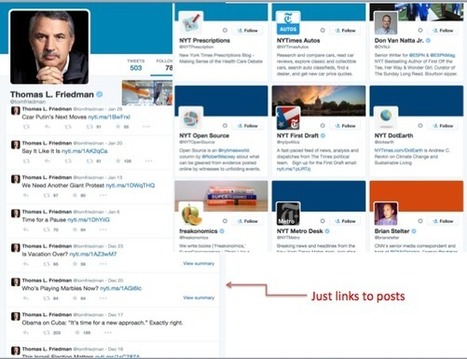


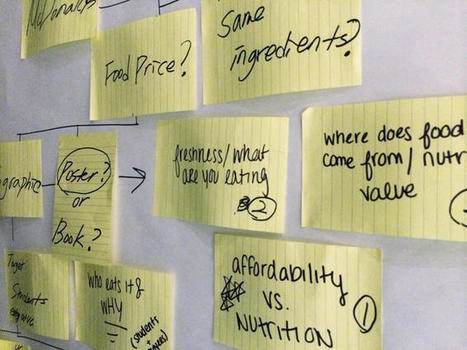
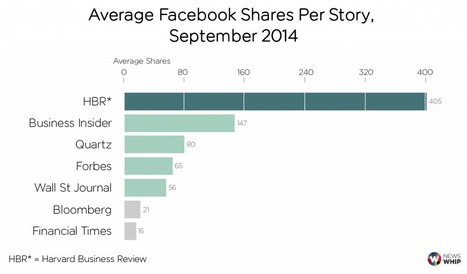
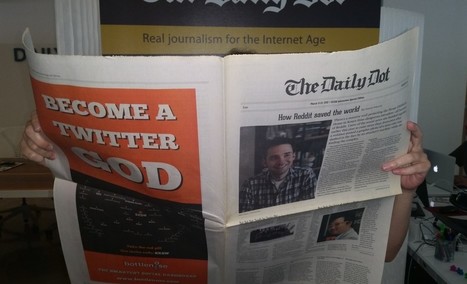
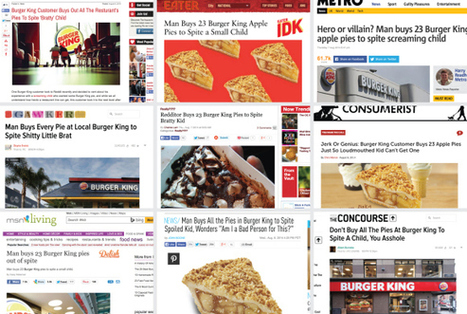



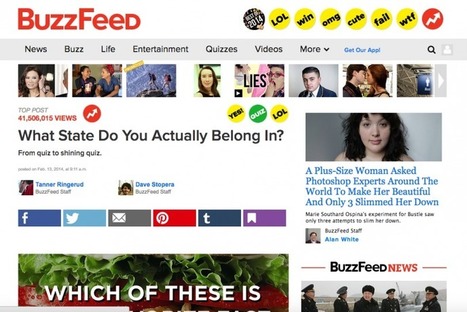

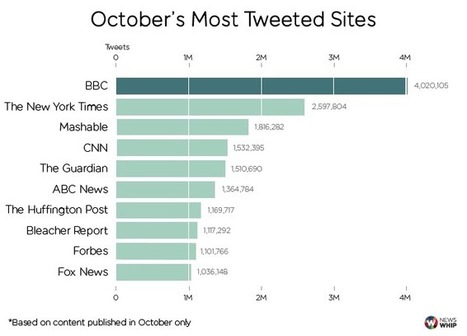



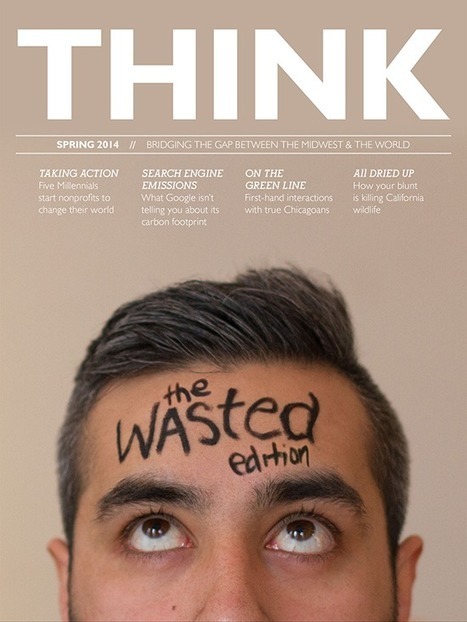









Is Blendle the future of journalism survival? Pay per article and refunds if you hate the article? I'm liking it.